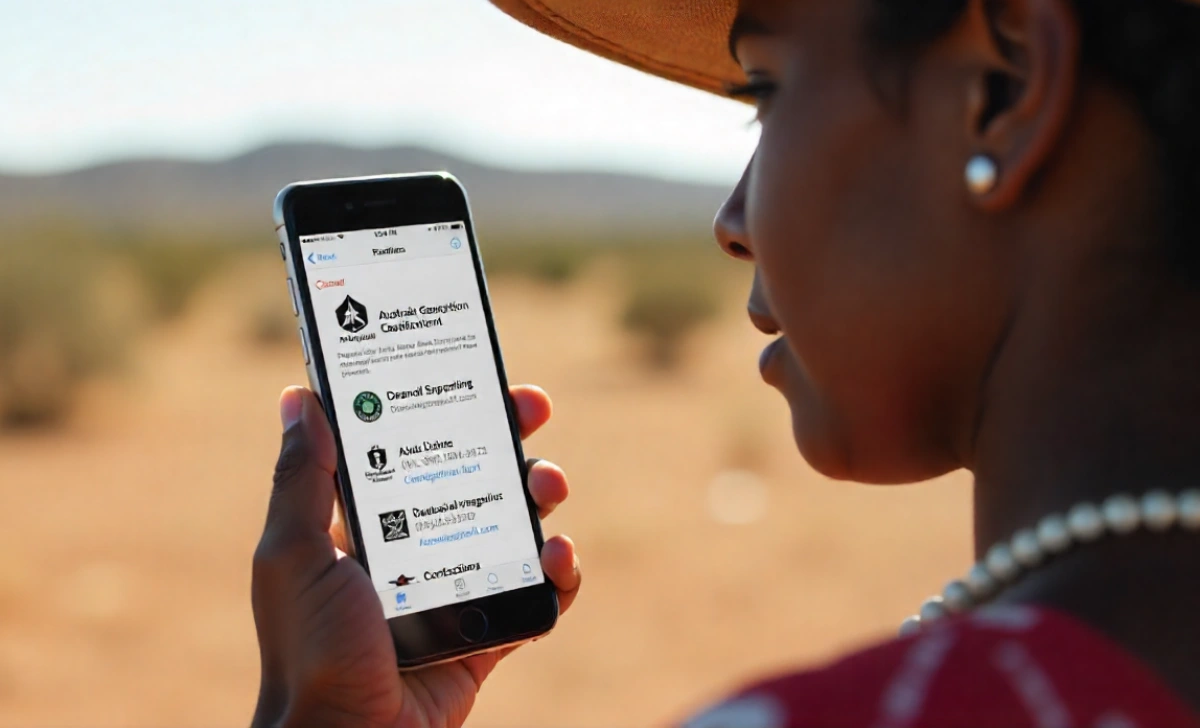Data breaches are becoming increasingly common in Australia, with millions of people affected by major incidents like the Optus and Medibank cyber attacks. If your personal information has been exposed in a data breach, you may feel uncertain about your rights and the steps you should take to protect yourself.
- What counts as a data breach in Australia?
- Immediate steps to take after a data breach
- 1. First 24 hours: Secure your accounts
- 2. First week: Monitor and protect
- 3. Ongoing protection (first month and beyond)
- Data Breach Response Timeline Checklist
- Who to notify after a data breach
- Contact the organisation directly
- Notify financial institutions and credit agencies
- Report to government agencies
- Your rights under Australian law after a data breach
- How to lodge a complaint or claim compensation
- Examples of data breach compensation in Australia
- FAQs
- How long do I have to take action after a data breach?
- Do I automatically get compensation after a data breach?
- What if the organisation that had the breach has closed down?
- Can I get compensation for emotional distress after a data breach?
- How do I know if my information was included in a data breach?
- What happens if I don’t respond to a data breach notification?
- Can small businesses be held liable for data breaches?
- Conclusion
Understanding your data breach rights Australia provides under the Privacy Act is crucial for safeguarding your personal information and seeking appropriate compensation. Recent breaches have highlighted serious gaps in how organisations protect consumer data, but Australians have strong legal protections and clear pathways for redress.
This comprehensive guide explains your rights after a data breach, who to contact, immediate protective steps to take, and how to lodge complaints or seek compensation through official channels.
What counts as a data breach in Australia?
Under the Privacy Act 1988 and the Notifiable Data Breaches (NDB) scheme, a data breach occurs when personal information is accessed, disclosed, or lost without authorisation and is likely to result in serious harm to affected individuals.
Data breaches can take many forms, including hacked computer systems, lost USB drives containing personal data, accidental email disclosures to the wrong recipients, or stolen laptops with unencrypted personal information.
Australian data breach statistics
The Office of the Australian Information Commissioner (OAIC) reported 553 notifiable data breaches in the 2023 financial year, affecting millions of Australians. Cyber incidents accounted for 67% of these breaches, with human error responsible for 30%.
Common breach scenarios include:
• Malicious cyber attacks targeting customer databases
• Accidental disclosure of personal information
• Lost or stolen devices containing personal data
• System vulnerabilities exploited by criminals
• Insider threats from employees or contractors
The largest breaches in recent Australian history—Optus (9.8 million customers) and Medibank (9.7 million members)—demonstrate the scale of personal data exposure possible in major incidents.
Immediate steps to take after a data breach
Taking swift action after learning about a data breach helps minimise potential harm and protects your data breach rights Australia law guarantees. Follow this timeline approach to ensure comprehensive protection.
1. First 24 hours: Secure your accounts
- Change passwords immediately for any accounts that may be affected, especially if the breach involved login credentials. Use strong, unique passwords for each account and avoid reusing passwords across multiple services.
- Enable multi-factor authentication (MFA) on all important accounts, including banking, email, and social media platforms. MFA provides an additional security layer even if your password is compromised.
- Contact your financial institutions to alert them about the breach and request enhanced monitoring of your accounts for suspicious activity.
2. First week: Monitor and protect
- Review bank and credit card statements carefully for unauthorised transactions. Report any suspicious activity to your financial institution immediately, as quick reporting often limits your liability for fraudulent charges.
- Check your credit report through free services like GetCreditScore or directly from credit reporting bodies like Equifax or illion. Look for new accounts, credit inquiries, or changes you didn’t authorise.
- Stay alert for scams targeting breach victims. Criminals often use stolen personal information to create convincing phishing emails or SMS messages requesting additional personal details.
3. Ongoing protection (first month and beyond)
- Monitor your digital footprint regularly by setting up Google Alerts for your name and checking if your email addresses appear in known data breach databases.
- Consider identity protection services if the breach involved sensitive information like driver’s licence numbers or Medicare details. Some organisations provide free monitoring services to affected customers.
Data Breach Response Timeline Checklist
| Timeframe | Actions Required | Priority Level |
|---|---|---|
| Day 1 | Change affected passwords, enable MFA, contact banks | High |
| Week 1 | Review financial statements, check credit report | High |
| Month 1 | Monitor for identity theft, set up alerts | Medium |
| Ongoing | Regular credit monitoring, stay alert for scams | Medium |
Who to notify after a data breach
Understanding who to contact after a data breach ensures you receive appropriate support and protection under the data breach rights Australia legislation provides.
Contact the organisation directly
Start by contacting the organisation that experienced the breach to understand exactly what personal information was exposed and what protective measures they’re implementing.
Ask specific questions about:
• What types of personal information were accessed
• How the breach occurred and when it was discovered
• What steps the organisation is taking to prevent future breaches
• What support services they’re providing to affected customers
Example: After the Optus breach, affected customers received free credit monitoring services and identity protection for 12 months, plus dedicated support hotlines for breach-related concerns.
Notify financial institutions and credit agencies
- Contact your banks and credit card providers immediately if financial information may have been compromised. Most institutions offer enhanced monitoring and can place security alerts on your accounts.
- Notify credit reporting bodies, including Equifax, Experian, and illion to request credit monitoring or consider placing a credit ban to prevent new credit applications in your name.
- Report to AUSTRAC if you suspect money laundering or terrorism financing activities related to the breach, though this is typically handled by the affected organisation.
Report to government agencies
- Contact IDCARE (Australia’s national identity and cyber support service) for free assistance with identity theft recovery and ongoing support. IDCARE provides personalised case management for data breach victims.
- Report to ReportCyber if you experience scams or cybercrime following the breach. This government platform connects you with appropriate law enforcement and support services.
- Consider contacting your state’s privacy commissioner if the breach involves a state government agency or if you’re unsatisfied with the organisation’s response.

Your rights under Australian law after a data breach
The Privacy Act 1988 and Australian Privacy Principles (APPs) provide comprehensive data breach rights Australian residents can exercise when their personal information is compromised.
Right to notification
Under the Notifiable Data Breaches scheme, organisations must notify you within a reasonable timeframe if a breach is likely to result in serious harm. Notifications must be clear, easy to understand, and include specific information about the breach.
Your notification should include:
• Description of the breach and what information was involved
• Steps the organisation is taking to address the breach
• Recommendations for protecting yourself from potential harm
• Contact information for further inquiries or support
Right to access and correction
You can request access to personal information the organisation holds about you, including details about how the breach affected your data specifically. This helps you understand the full scope of your exposure.
You also have the right to request correction of any inaccurate information that may have been exposed or compromised in the breach.
Right to lodge complaints
If you’re unsatisfied with how an organisation handled a data breach affecting you, you have the right to lodge formal complaints through established processes, starting with the organisation and escalating to the OAIC if necessary.
Your key rights include:
• Timely notification of breaches affecting you
• Clear information about what data was compromised
• Access to your personal information held by the organisation
• Correction of inaccurate or outdated information
• Free complaints process through the OAIC
• Reasonable steps by organisations to prevent future breaches
How to lodge a complaint or claim compensation
When organisations fail to adequately protect your personal information or respond appropriately to breaches, you have several options for seeking redress under the data breach rights Australia law provides.
Step 1: Complain to the organisation
Begin by lodging a written complaint with the organisation’s privacy officer or customer service team. Use this template to ensure you cover all necessary points:
Subject: Formal Complaint – Data Breach Response
Dear Privacy Officer,
I am writing to lodge a formal complaint regarding [Organisation Name]’s handling of the data breach that occurred on [date] and affected my personal information.
Details of my concern: [Describe specific issues with the breach response, notification timing, or protective measures]
Personal information involved: [List what personal data was compromised – be specific]
Resolution sought: [State clearly what you want – compensation, better security measures, clearer communication, etc.]
Under the Privacy Act 1988 and Australian Privacy Principles, I request:
• A detailed explanation of how my personal information was compromised
• Information about steps taken to prevent similar breaches
• Appropriate compensation for any harm or inconvenience suffered
• Enhanced protective measures for my remaining personal information
I expect a written response within 30 days as required under Australian privacy law.
Your contact details: [Full name, address, phone, email, customer/account numbers]
Yours sincerely, [Your signature and name]
Step 2: Escalate to OAIC
If the organisation doesn’t respond within 30 days or their response is inadequate, you can escalate your complaint to the Office of the Australian Information Commissioner.
OAIC complaints are:
• Free to lodge and pursue
• Available online through the OAIC website
• Supported by comprehensive investigation powers
• Backed by enforcement options including penalties
The OAIC will assess whether your complaint has merit and may pursue conciliation between you and the organisation. In serious cases, they can launch formal investigations and impose significant penalties.
Step 3: Legal action and compensation
For major breaches causing significant harm, you may be eligible to join class action lawsuits seeking compensation from negligent organisations.
Current Australian data breach class actions include:
• Optus class action seeking compensation for affected customers
• Medibank legal action for breach victims
• Multiple smaller class actions against various organisations
Compensation amounts depend on the harm suffered, including financial losses, time spent addressing the breach, and emotional distress caused by privacy violations.
Examples of data breach compensation in Australia
Recent data breach cases demonstrate that Australians can receive meaningful compensation when organisations fail to protect personal information adequately.
Optus data breach settlement
The Optus breach class action is seeking compensation for 9.8 million affected customers, with individual settlements potentially ranging from hundreds to thousands of dollars, depending on the harm suffered.
Factors affecting compensation amounts include:
• Whether identity documents were compromised
• Financial losses from identity theft or fraud
• Time and costs involved in protective measures
• Emotional distress and inconvenience experienced
Medibank cyber attack outcomes
The Medibank breach affected 9.7 million current and former customers, with a class action launched seeking compensation for privacy violations and inadequate security measures.
Case study: One Medibank victim received a provisional settlement of $1,200 after demonstrating they spent significant time and money obtaining new identity documents and implementing protective measures following the breach.
Factors influencing compensation
Australian courts consider several factors when determining data breach compensation:
• Sensitivity of the information compromised
• Organisation’s negligence in preventing the breach
• Actual financial harm suffered by victims
• Time and effort required for protective measures
• Emotional distress and loss of privacy
FAQs
How long do I have to take action after a data breach?
There’s no strict deadline for exercising your data breach rights Australia law provides, but acting quickly is crucial. Change passwords and secure accounts immediately, contact financial institutions within 24-48 hours, and lodge complaints with organisations within a reasonable timeframe (typically within 2 years for legal action).
The sooner you act, the better you can protect yourself from ongoing harm and preserve evidence for potential compensation claims.
Do I automatically get compensation after a data breach?
Not automatically. Compensation depends on whether you can demonstrate actual harm from the breach, such as financial losses, identity theft, or significant inconvenience. You may need to join class action lawsuits or pursue individual legal action to receive compensation.
Many organisations offer free credit monitoring or identity protection services to affected customers, which can be valuable even without cash compensation.
What if the organisation that had the breach has closed down?
If the organisation has ceased operations, you can still lodge complaints with the OAIC, which may investigate and take enforcement action. For compensation, you might need to pursue claims through administrators, liquidators, or professional indemnity insurers.
Contact IDCARE for assistance navigating these complex situations, as they provide specialised support for identity theft recovery.
Can I get compensation for emotional distress after a data breach?
Yes, Australian courts have recognised emotional distress and loss of privacy as compensable harm in data breach cases. However, you’ll typically need to demonstrate that the distress was significant and directly caused by the breach.
Compensation for emotional distress is often combined with other damages like financial losses and time spent addressing the breach impacts.
How do I know if my information was included in a data breach?
Organisations must notify you directly if your personal information was involved in a notifiable data breach likely to cause serious harm. You can also:
• Check the OAIC website for published breach notifications
• Use online services like “Have I Been Pwned” to check if your email appears in known breaches
• Monitor your accounts for suspicious activity
• Set up Google Alerts for your name and personal details
What happens if I don’t respond to a data breach notification?
While there’s no legal requirement to respond to breach notifications, failing to take protective action leaves you vulnerable to identity theft, fraud, and other harmful consequences.
Even if you don’t immediately see evidence of misuse, criminals can use stolen personal information months or years later. Taking recommended protective steps helps safeguard your future security.
Can small businesses be held liable for data breaches?
Small businesses with an annual turnover under $3 million are generally exempt from Privacy Act obligations unless they handle health information or credit data. However, 2025 privacy law reforms may expand coverage to more small businesses.
Even exempt businesses can face liability under consumer protection laws if they fail to adequately protect customer information.
Conclusion
Understanding your data breach rights Australia law provides empowers you to take appropriate action when organisations fail to protect your personal information. By acting quickly to secure your accounts, notifying relevant parties, and using established complaint processes, you can minimise harm and seek appropriate redress.
The Privacy Act gives Australians strong protections, and recent enforcement actions show that organisations face real consequences for inadequate data security. Whether seeking information, lodging complaints, or pursuing compensation, you have clear legal pathways available.
Remember that data breach response is time-sensitive—the sooner you act, the better you can protect yourself from potential harm and preserve your rights under Australian privacy law.
Take action now: If you’ve been affected by a data breach, follow the timeline steps in this guide, use our complaint template, and don’t hesitate to escalate to the OAIC if organisations don’t respond appropriately.
For comprehensive information about your broader privacy rights and upcoming law changes, read our complete guide to privacy law in Australia 2025.
Have you been affected by a data breach? Share your experience in the comments to help other Australians understand their rights and take appropriate protective action.






